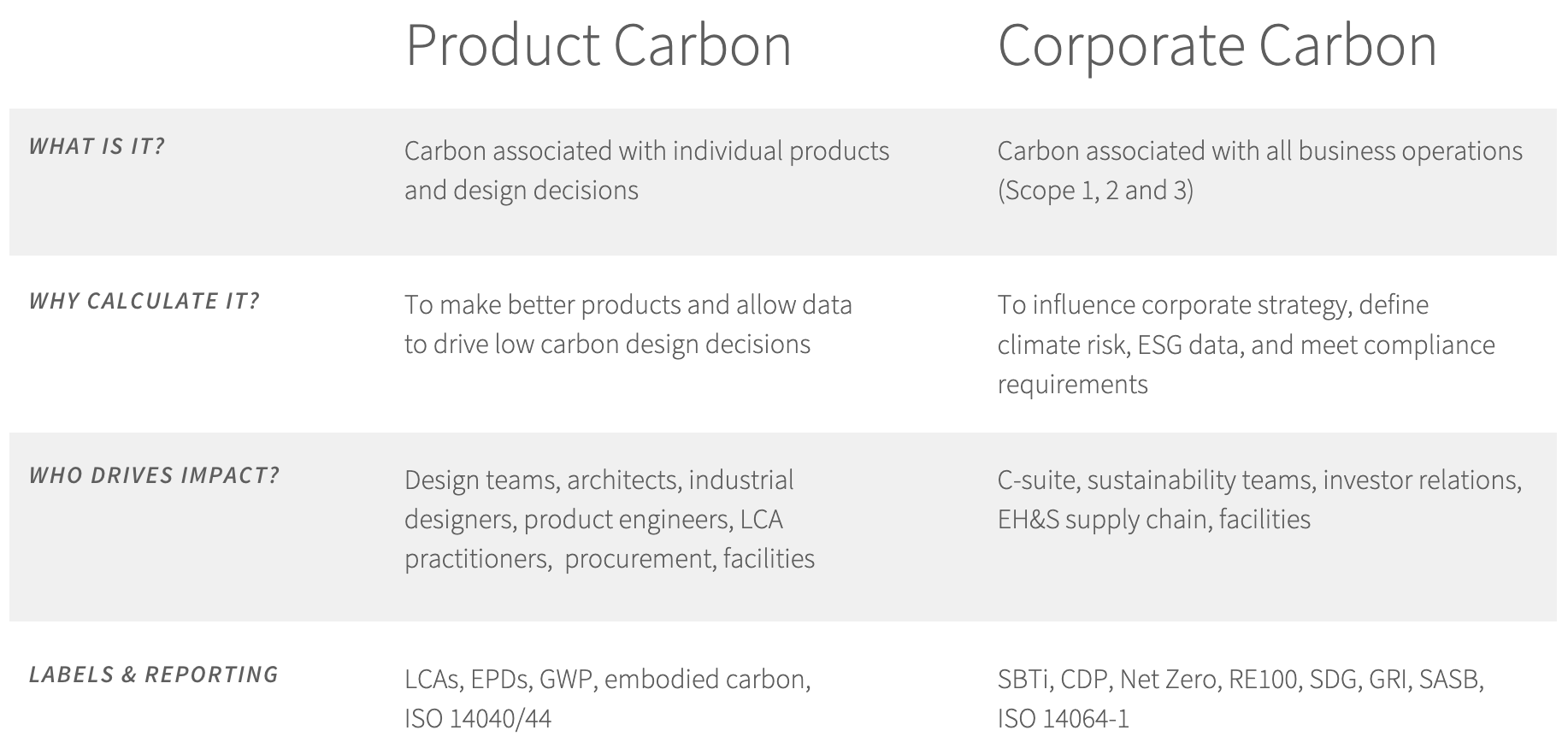The Difference Between Product & Corporate Carbon
As the world continues to grapple with the challenges of climate change, it has become increasingly important for companies to measure and reduce their carbon footprints. Two terms that are often used in this context are product carbon and corporate carbon. While they may sound similar, they refer to different things and require different approaches to address.
Product Carbon
Product carbon, also known as embodied carbon, refers to the carbon emissions that are associated with the production, distribution, use, and disposal of a product. This includes the emissions associated with the extraction of raw materials, the manufacturing process, transportation, and packaging.
For example, the product carbon of a car would include the carbon emissions associated with the extraction of metals and other raw materials used to make the car, the manufacturing process, the transportation of the car to the dealership, the emissions generated by the car during its use, and the emissions associated with the disposal of the car at the end of its life.
Understanding a product's carbon footprint is important because it helps consumers and companies make informed decisions about the environmental impact of the products they buy or produce. Reducing the product carbon of a product can be achieved through a variety of measures, such as using more sustainable materials, reducing waste and energy consumption during manufacturing, and improving the efficiency of transportation.
Corporate Carbon
Corporate carbon, also known as organizational carbon or Scope 1, 2, and 3 emissions, refers to the carbon emissions that are directly and indirectly associated with the activities of a company. These emissions include those generated by the company's operations, such as the energy used to power its offices, factories, and other facilities, as well as emissions generated by the company's supply chain, including the extraction and production of raw materials and the transportation of goods and services.
Reducing corporate carbon emissions requires a comprehensive approach and a deep understanding of a company’s organizational boundaries. For example, a company might reduce its corporate carbon emissions by switching to renewable energy sources, implementing energy-efficient practices in its operations, and working with suppliers to reduce the carbon footprint of its supply chain.
Carbon Disclosure by Type
Once you have carbon data – share it! Transparency builds validity, trust, and authority with your customers and throughout your industry. Product carbon is typically shared through Life Cycle Assessments (LCAs), Environmental Product Disclosures (EPDs), and regulatory frameworks such as ISO 14040/44. Some of these mechanisms are third-party verified. Once verified, these claims can be used to tell your product’s sustainability story in marketing materials and assets. Provided documentation protects your company against greenwashing.
On the other hand, corporate carbon disclosure takes place through global databases and frameworks such as SBTi, CDP, Net Zero, RE 100, United Nations SDGs, GRI, SASB, and ISO 14064-1. Each of these mechanisms takes a slightly different approach and speaks to a different audience, so be sure to chat with an expert to determine which framework is most apt for your business. Additionally, you can choose to publish your own sustainability report, opting to include broader initiatives that don’t fit within a particular framework.
While both product carbon and corporate carbon are important metrics for understanding a company's carbon footprint, they require different approaches to address. As concerns about climate change continue to grow, it is increasingly important for companies to measure and reduce their carbon footprints and these are two great places to start.
Interested in more specific topics surrounding sustainability? Check out our free monthly webinar put on by industry experts at Foresight Management.


